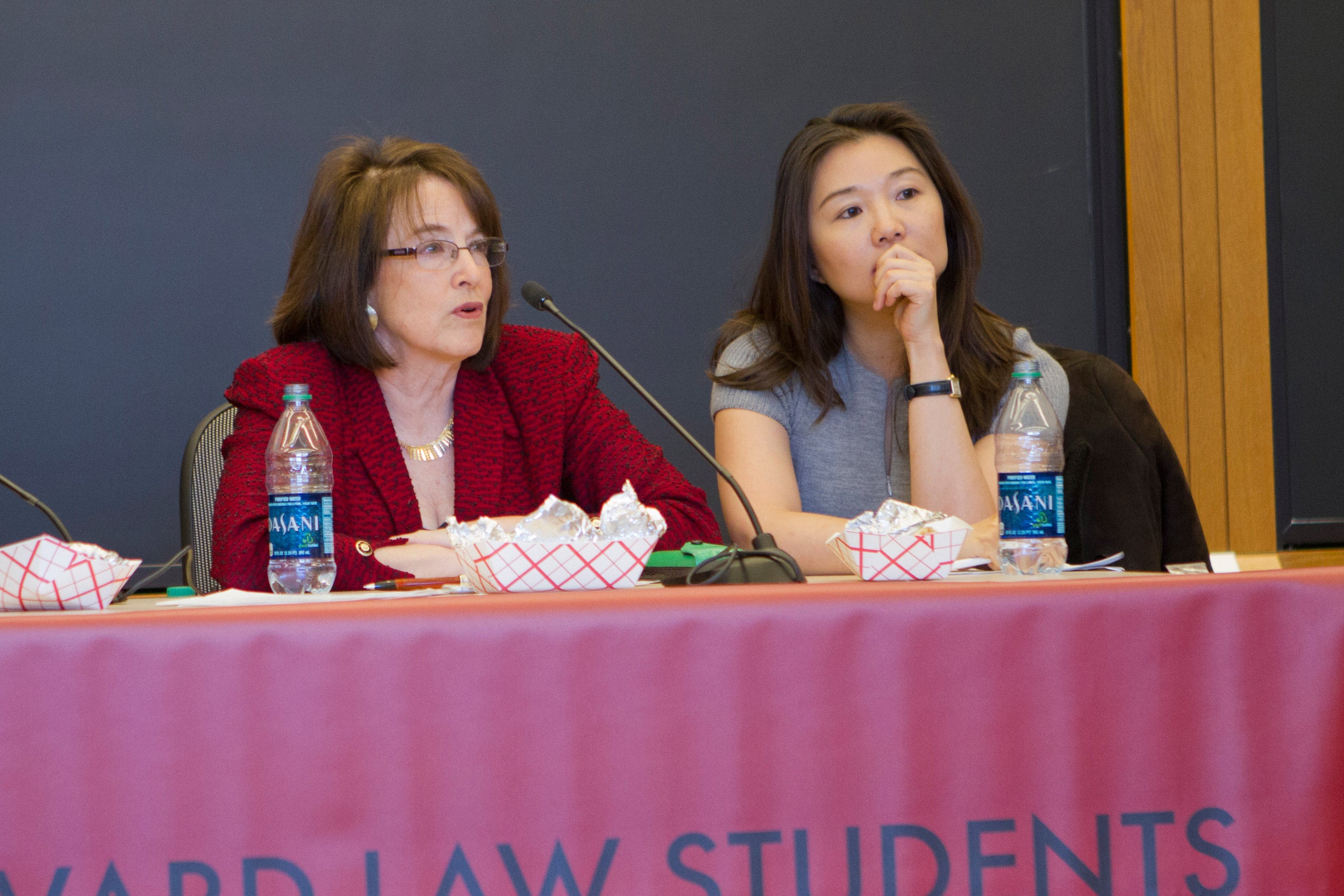Fifty years after the Supreme Court kicked off its line of “right to privacy” cases with Griswold v. Connecticut, which declared unconstitutional a state statute prohibiting couples from using contraceptives, a panel of three Harvard Law professors met to discuss the impact and legacy of the landmark case.
On March 24, Harvard Law Students for Reproductive Justice hosted Professors Laurence Tribe ’66, Jeannie Suk ’02, and Judge Nancy Gertner for a panel discussion of what the famous contraceptives case held and how it led to a series of major decisions, including Roe v. Wade’s 1973 holding that women have a constitutional right, grounded in the right to privacy, to seek abortions. The panelists also suggested that the line would continue to extend in the near future, particularly in the four same-sex marriage cases currently before the Supreme Court, with Tribe predicting that “we’ll see a dramatic example of [Griswold’s legacy] in late June, when the Court will hold that states that deny marriage equality are violating the Constitution.”

Griswold held that states could not prosecute married couples for using contraceptives. The holding was later extended, by way of the Equal Protection Clause, to unmarried couples in the 1972 case Eisenstadt v. Baird. According to Tribe, Griswold can be understood today as an example of the Court using the Due Process and Equal Protection Clauses to bring outlier states in line with the rest of the country. This, he said, could explain decisions that are typically viewed as either liberal or conservative, including Lawrence v. Texas, the 2003 case that invalidated anti-sodomy laws in 14 states, and District of Columbia v. Heller and McDonald v. Chicago, which together struck down some of the strictest gun control laws in the country.
Most importantly, Tribe stressed, Griswold represented the Court’s embrace of rights not explicitly enumerated in the Constitution, including a right to privacy. “Its most profound legacy is a rejection of a clause-bound, laundry-like approach to the rights of individuals and states,” Tribe said. “The Court has engaged in a geological process of digging beneath the Constitution to unearth its tacit postulates.”

Suk focused on an older case, Poe v. Ullman, which she called the blueprint to Griswold. In Poe, the Supreme Court refused to rule on the merits in a case challenging the same Connecticut statute at issue in Griswold. In a dissent from Poe, however, Justice Harlan presented a broad view of liberty interests, stating that liberty is not a series of isolated points, such as freedom of property and the press, but a rational continuum. According to Suk, that approach became the building block for Griswold and its progeny.
“The right at stake, that was so important, so fundamental that it couldn’t just be ignored and dismissed, was the fundamental privacy of the marital relationship,” Suk said. “That was a hugely important template for the rest of the way that privacy would unfold.”

According to Suk, an interesting thread of Poe and Griswold was its use of a familiar, common law idea, that the relationship between a husband and wife is a private one that the State should not readily interfere with, to create a constitutional principle of a right to privacy. Marriage became the tying thread of all of the right to privacy cases, even as the rights at issue were later applied to unmarried couples in cases like Eisenstadt and Lawrence.
“In terms of its progeny, the [same-sex marriage] case we’re about to have in June is the ineluctable, logical, almost inevitable result of the Poe and Griswold cases combined,” Suk said. “Given the blueprint, the architecture and the deeper meanings, it has to be about marriage, it has to end with that as the finale.”
Gertner rounded out the comments with a feminist view of the Griswold line of cases, focusing on the gender discrimination inherent in cases limiting reproductive rights because of the disproportionate outcome they has on women. Although Gertner praised Griswold for carving out a lasting concept of privacy, she expressed concern over the reinforcement of a private sphere in which the government cannot regulate, a conception that Gertner argued contributed to courts’ failure to come to grips with domestic violence and marital rape. “To some degree, privacy, which in Griswold trumps other rights, sets up a balancing approach: my privacy, your privacy, the rights of the fetus, the rights of others. It becomes difficult to identify whose privacy rights trump whose.”
